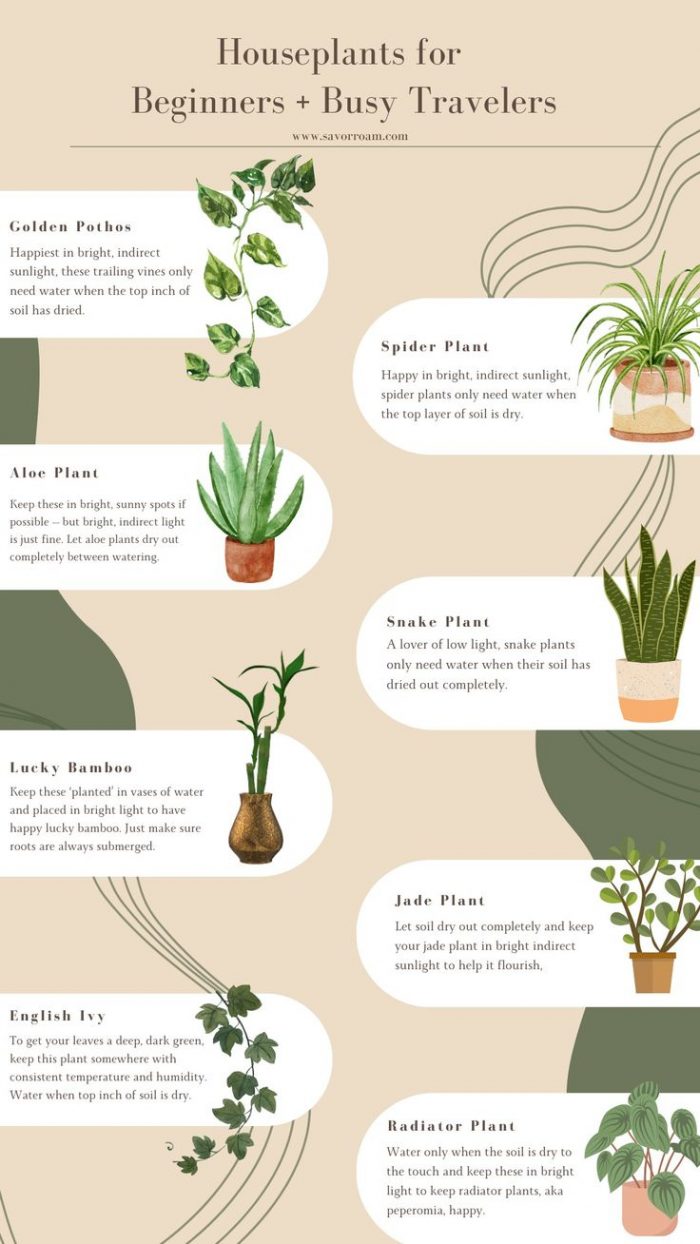
If you’re looking for a good indoor plant that isn’t too difficult to take care of, look no further. These eight houseplants are perfect for beginners who want a little greenery in their homes but don’t know much about gardening yet.
Golden Pothos
Golden Pothos is a good house plant for beginners because it’s easy to grow and can adapt to different conditions. This vine-like plant can grow up to 3 feet tall, so it might need to be staked or trellised if you want it in a hanging basket. If you’re growing Golden Pothos in your home, keep an eye out for signs of overwatering on the leaves (they’ll turn yellow). The best way to manage this is by letting some water drain out of your pot before refilling it again. Golden Pothos has an upright growth habit with thick stems–perfect for hanging baskets!
Spider Plant
Spider plants are one of the best houseplants for beginners. They’re easy to grow, don’t require much attention and can be grown in hanging baskets or on a tabletop. They’re also great at purifying the air around you, so they’re perfect for the bathroom. The spider plant is an excellent choice if you want something that will thrive under low light conditions or even indoors during winter months when natural sunlight is limited–just make sure it gets enough water!
Aloe Plant
Aloe Vera is one of the best house plants for beginners. It’s a succulent plant, which means it stores water in its leaves. This makes Aloe Vera a great choice if you live in an area with dry air or you want to add humidity to your home. Aloe Vera can be grown indoors as well as outdoors, but it does best when left alone in warm climates (between 70 and 90 degrees Fahrenheit). If you live somewhere colder than that, try keeping your aloe vera inside near a window where it will get plenty of sunlight during the day and then bring back inside at night to protect it from freezing temperatures outside.
Snake Plant
The snake plant is a low maintenance houseplant that’s easy to grow. It also goes by the names snake plant, mother-in-law’s tongue, and dragon tree. This popular indoor plant has a long lifespan and can thrive in just about any conditions you provide it with.
Lucky Bamboo
Lucky bamboo is a good house plant for beginners. It’s a decorative plant with long green stems and dark green leaves, making it a beautiful addition to any home. Lucky bamboo is also easy to grow and care for, making it an ideal choice for those who are new to the world of indoor gardening. Lucky bamboo is known as an air purifier because it absorbs toxins like formaldehyde and benzene from the air around it, which can be good if you have pets or smoke cigarettes in your home.
Jade Plant
Jade plants are among the easiest to care for, but they need to be in a warm environment. They grow well in a variety of soil types and can tolerate drought conditions. Jade plants do not need much water, so you’ll only need to water them once or twice per month during the summer months. Jade plants are hardy enough to live outside year-round if you live somewhere warmer than zone 8a or 9b (32 degrees F or higher). If you live in one of those zones, it’s best to bring the plant indoors when temperatures drop below freezing at night and keep it out of direct sunlight during winter months when daylight hours are short and your jade will not get enough light energy from artificial lights alone
English Ivy
English Ivy is a popular houseplant that’s easy to grow, but needs plenty of light. It’s poisonous to cats and dogs, so make sure you keep it away from pets. English ivy can be propagated easily by rooting cuttings in water or soil (with or without rooting hormone).
Radiator Plant
The radiator plant is a great houseplant for beginners. It’s easy to grow, and it can tolerate low light. The plant is also known as the Mother-in-Law’s Tongue because of its long, narrow leaves that resemble old-fashioned curling irons. The radiator plant is an air purifier–it absorbs toxic gases such as formaldehyde and benzene from indoor air while emitting oxygen at night time when you are sleeping. It will help improve your sleep quality! The plant can be propagated easily by cutting off one stem with healthy leaves at its base; place the cutting into water until roots appear (usually within two weeks), then transplant into soil or another pot filled with fresh potting mix.
We hope that you have enjoyed reading this article and found it useful. If you have any questions, don’t hesitate to ask us!
